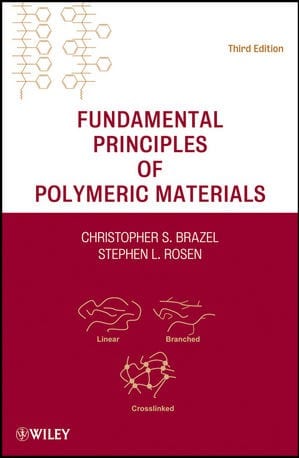 Fundamental Principles of Polymeric Materials, 3rd Edition
Fundamental Principles of Polymeric Materials, 3rd Edition
Christopher S. Brazel, Stephen L. Rosen
ISBN: 978-0-470-50542-7
Hardcover / E-Book
432 pages
$99.95 / $69.99
Click here for more information
Reviewed by Professor Michael R. Buchmeiser, University of Stuttgart
Polymer science is a vivid and rapidly growing area of research with substantial impact on other fields of science as well as on daily life. In view of its complexity, most textbooks either focus on polymer chemistry, polymer physics or on polymer engineering providing a wealth of information and specialty knowledge on one of the aforementioned areas. Such an approach might be of certain value for specialists.
However, what most students, including my own ones, look for is one textbook that provides substantial and sufficient insight into all the aspects of polymers without getting overburdened with details. This is particularly true for those students who come into contact with polymer science for the first time. And these are exactly the needs this book can fulfill.
The authors managed to compile a book that covers most fundamental aspects of polymer chemistry, physics and polymeric materials including polymer engineering and processing. 22 chapters successfully contribute to that task, which is not an easy one. The references given at the end of each individual chapter offer access to comprehensive reading. Examples to be solved by the reader demonstrate nicely how the information that is given in the individual chapters is to be used. Additional hints and information given in the answers further help to facilitate understanding.
In the end, most relevant aspects of polymer synthesis, the structure and physics of polymers and polymer processing are presented with one exception: no word about metathesis polymerization (ring-opening metathesis polymerization ROMP), acyclic diene polymerization (ADMET), 1-alkyne polymerization or the cyclopolymerization of α,ω-diynes). In view of the high popularity of these polymerization techniques, the authors may want to elaborate on that in the next edition. Also, one or the other typo needs to be erased.
Nonetheless, in its present form, this book provides an attractive “all-in-one” information package for those who come into contact with polymer science for the first time. Thus, this is a felicitous compilation on polymer chemistry, physics and engineering, which I can recommend to any of my undergraduate students.

















